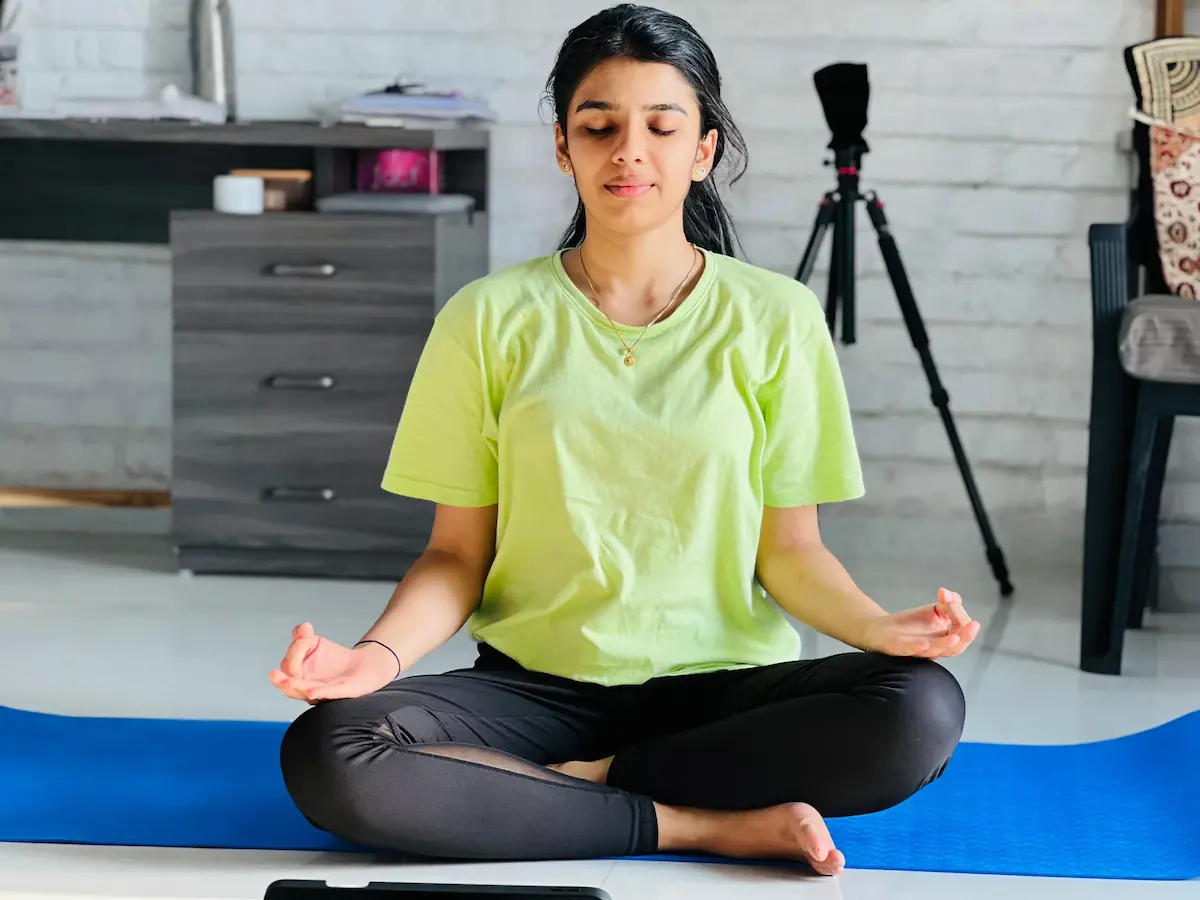Modern life often means long hours at a desk or on the couch, leaving our bodies feeling stiff, achy, and tired. The good news? You don’t need fancy equipment or a gym membership to start feeling better. Practicing yoga at home even just a few minutes a day can help you shake off stiffness, improve flexibility, and revive tired feet. These simple asanas (yoga poses) are perfect for beginners and require no prior experience.
Marjaryasana–Bitilasana (Cat-Cow Stretch)
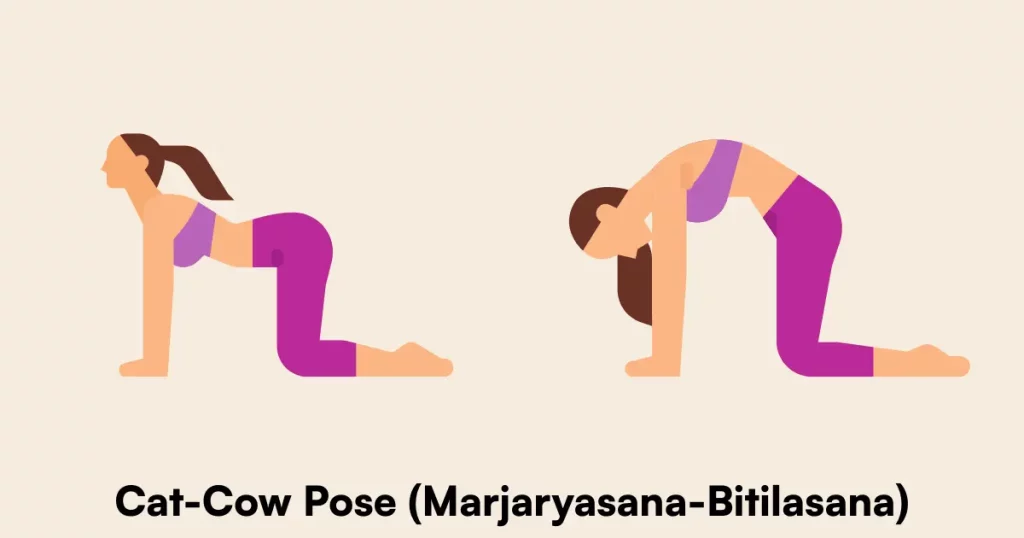
How to Do It:
- Sit on the edge of a sturdy chair with your feet flat on the floor.
- Place your hands on your knees.
- Inhale: Arch your back, lift your chest and chin (Cow Pose).
- Exhale: Round your spine, tucking your chin to your chest (Cat Pose).
- Repeat for 5–8 slow breaths.
Benefits:
- Relieves back and neck tension
- Gently mobilizes the spine
Tips:
- Move with your breath.
- Keep movements slow and gentle avoid forcing any stretch.
Uttanasana with Arm Sway (Standing Forward Fold)
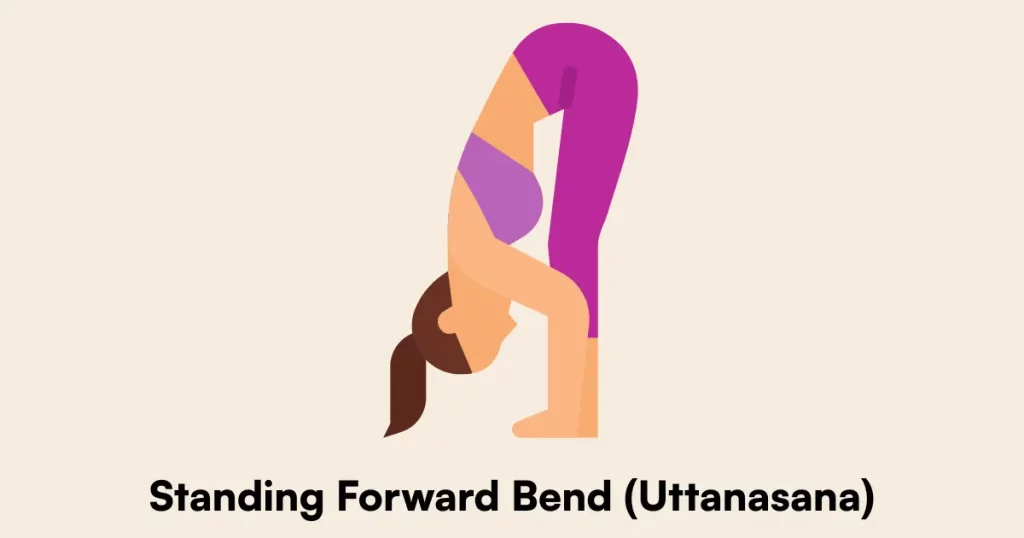
How to Do It:
- Stand with feet hip-width apart.
- Slowly bend forward at the hips, letting your upper body hang.
- Hold opposite elbows and gently sway side to side.
- Breathe deeply and hold for 30–60 seconds.
Benefits:
- Stretches hamstrings and lower back
- Eases tension from prolonged sitting
Precautions:
- Bend knees slightly if your hamstrings are tight.
- Rise up slowly to avoid dizziness.
Anjaneyasana with Side Stretch (Low Lunge)
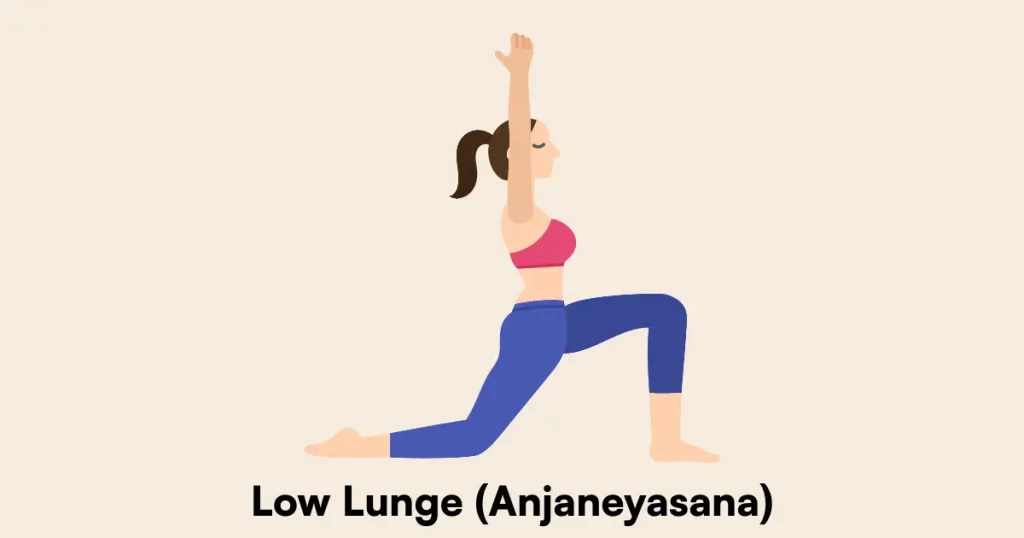
How to Do It:
- Step one foot forward into a lunge; lower your back knee to the ground.
- Raise both arms overhead.
- Grasp your opposite wrist and lean gently toward the front leg.
- Hold for 5 deep breaths, then switch sides.
Benefits:
- Opens hips and stretches the spine
- Improves balance and posture
Tips:
- Use a cushion under your back knee for comfort.
- Keep your front knee above your ankle.
Parsva Balasana (Thread-the-Needle Pose)
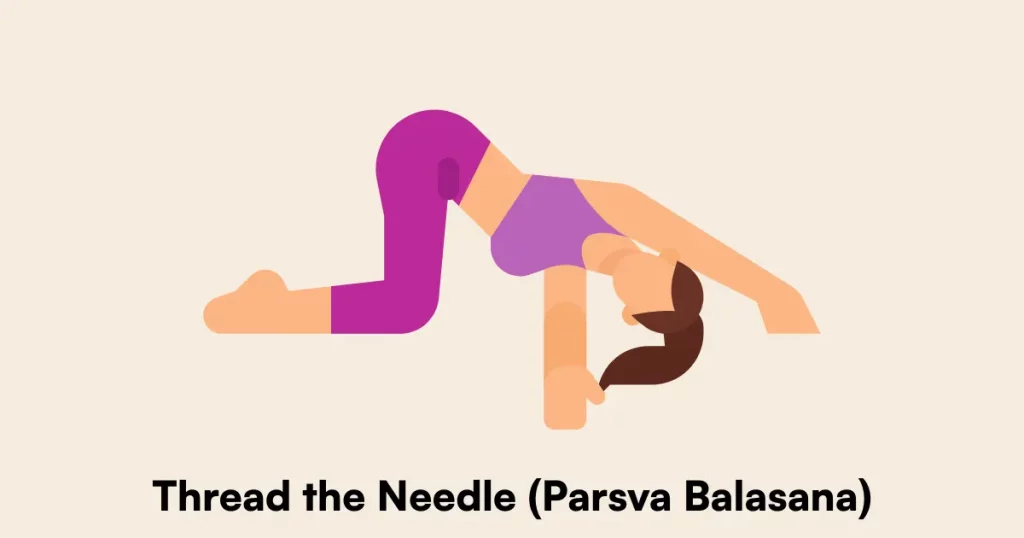
How to Do It:
- Start on hands and knees in tabletop position.
- Slide your right arm under your left, resting your right shoulder and temple on the mat.
- Keep your left arm extended forward and hips high.
- Hold for 5–7 breaths, then switch sides.
Benefits:
- Releases tension in shoulders and upper back
- Enhances spinal flexibility
Precautions:
- Move slowly and stop if you feel any discomfort in your shoulders.
Viparita Karani (Legs-Up-the-Wall Pose)
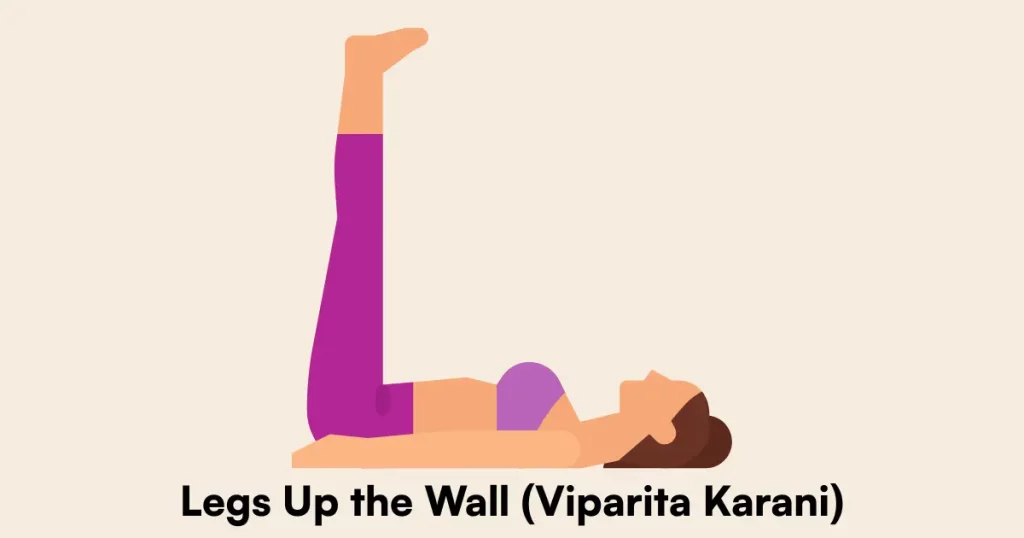
How to Do It:
- Sit sideways next to a wall.
- Swing your legs up the wall as you lie back, forming an L shape.
- Rest your arms by your sides, palms up.
- Stay here for 5–10 minutes, breathing gently.
Benefits:
- Boosts circulation and relieves tired feet
- Calms the nervous system
Tips:
- Place a pillow under your hips for extra support.
- Close your eyes and relax.
Conclusion: Make Yoga Your Daily Desk Break
Even a few minutes of gentle movement can make a world of difference for stiff joints and tired feet. Try these asanas daily at your desk, on the couch, or wherever you find a little space. Listen to your body, move mindfully, and enjoy the benefits of a more flexible, energized you!
- Why Your Mind Wanders During Meditation
- Beginner Yoga Poses for Stress Relief
- Yoga vs Gym: Which is Better for Mental Health?
Frequently Asked Questions
Q: Do I need any special equipment for these poses?
A: No! All you need is a sturdy chair, a wall, and maybe a cushion or mat for comfort.
Q: How often should I practice these asanas?
A: Aim for daily practice, even if it’s just 5–10 minutes. Consistency is key.
Q: Can I do these poses if I’m not flexible?
A: Absolutely. These asanas are beginner-friendly and can be modified to suit your comfort level.
Q: What if I feel pain during a pose?
A: Stop immediately. Yoga should never hurt. Move gently and listen to your body.
Q: Are these poses safe for everyone?
A: Most people can practice these safely, but if you have any medical conditions or injuries, consult your doctor before starting a new exercise routine.
Start today, and let yoga help you feel your best no matter how many hours you spend at your desk or on your couch!

